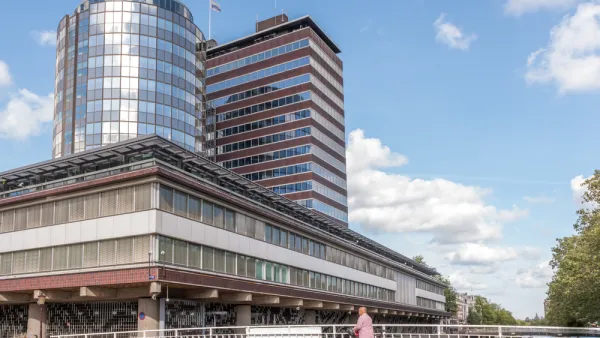Programs that make folks pay for garbage services based on how much they throw away can cut down trash in landfills. Designers are looking for ways to adapt these programs to multiunit buildings.

Policy makers looking to curb waste have had some success with "pay-as-you-throw" schemes, which charge families different amounts for their trash service based on how much waste they produce. One such program in Boulder, Colorado was shown to cut waste to landfills by more than 30%. Now designers are looking to adapt this type of program to multi-unit buildings where it can be much more tricky to tell who is throwing away what and the tragedy of the commons can take hold.
"We think a combination of the right incentives and, yes, trash chute innovations can enable pay-as-you-throw to take hold in apartment buildings — and, over time, improve landfill diversion and recycling rates in cities," Jesse Shapins writes in a Medium post on behalf of Side Walk Talk. In designing for an apartment building, the team had a series of unique challenges to work through, they needed to make something that would identify what apartment was throwing away what garbage without making the residents feel as if their privacy was being invaded.
To test the system, the team created a pilot group and, while they didn't charge the test subjects based on what they threw out, they did apply nudges. "The ultimate goal of a pay-as-you-throw program is to increase recycling rates. In this prototype, we didn’t introduce payment as an incentive, and instead tested simpler behavioral nudges of showing people how much trash they threw away in comparison with neighbors," Shapins writes. The groups tests are not over and the team hopes to continue to scale up to a full building. "We remain focused on the fundamental first step: making trash individually measurable within a multi-family setting," Shapins says.
FULL STORY: We held a one-week design sprint to build a smart trash chute. Here’s what we learned

National Parks Layoffs Will Cause Communities to Lose Billions
Thousands of essential park workers were laid off this week, just before the busy spring break season.

Retro-silient?: America’s First “Eco-burb,” The Woodlands Turns 50
A master-planned community north of Houston offers lessons on green infrastructure and resilient design, but falls short of its founder’s lofty affordability and walkability goals.

Delivering for America Plan Will Downgrade Mail Service in at Least 49.5 Percent of Zip Codes
Republican and Democrat lawmakers criticize the plan for its disproportionate negative impact on rural communities.

Test News Post 1
This is a summary

Test News Headline 46
Test for the image on the front page.

Balancing Bombs and Butterflies: How the National Guard Protects a Rare Species
The National Guard at Fort Indiantown Gap uses GIS technology and land management strategies to balance military training with conservation efforts, ensuring the survival of the rare eastern regal fritillary butterfly.
Urban Design for Planners 1: Software Tools
This six-course series explores essential urban design concepts using open source software and equips planners with the tools they need to participate fully in the urban design process.
Planning for Universal Design
Learn the tools for implementing Universal Design in planning regulations.
EMC Planning Group, Inc.
Planetizen
Planetizen
Mpact (formerly Rail~Volution)
Great Falls Development Authority, Inc.
HUDs Office of Policy Development and Research
NYU Wagner Graduate School of Public Service





























